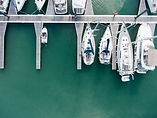What is AIS?
- Lenny Fourie
- Sep 17, 2020
- 3 min read
Updated: Feb 7, 2021
Some FAQ's around the ever popular AIS (Automatic Identification System)

AIS is a relatively simple concept as it uses VHF and GPS to transmit data to other ships significantly increasing the safety of you, your crew or your family.
AIS, or Automatic Identification System, is an ideal way to see and be seen in busy ports, waterways and out at sea. It is a simple concept, fusing dynamic and static data together to build up a live image of the surrounding marine environment which is then displayed on a chart plotter or on board display.
AIS works via a combination of GPS, VHF radio, and an AIS transponder. The transponder broadcasts a ship’s information, such as speed and heading (information gathered by GPS), the ship’s name, port of origin, size and draft, and more, over VHF frequencies 161.975 megahertz and 162.025 MHz. This information is updated constantly and can be viewed by any other ship or boat equipped with an AIS unit, as well as on any chart plotter, MFD, computer or smartphone linked to the internet.
AIS provides many benefits to mariners greatly improving situational awareness and decision making. With AIS onboard your boat will be a safer boat.
What type of AIS devices are in use?
Class A transceivers: These are designed to be fitted to commercial vessels such as cargo ships and large passenger vessels. Class A transceivers transmit at a higher VHF signal power than class B transceivers and therefore can be received by more distant vessels, and also transmit more frequently. Class A transceivers are mandatory on all vessels over 300 gross tonnes on international voyages and certain types of passenger vessels under the SOLAS mandate.
Inland AIS stations: Similar to class A transceivers with additional features for use on Inland waterways.
Class B transceivers: Similar to Class A transceivers in many ways, but are normally lower cost due to the less stringent performance requirements. Class B transceivers transmit at a lower power and at a lower reporting rate than Class A transceivers.
AIS base stations: AIS base stations are used by Vessel Traffic Systems to monitor and control the transmissions of AIS transceivers.
Aids to Navigation (AtoN) transceivers: AtoNs are transceivers mounted on buoys or other hazards to shipping which transmit details of their location to the surrounding vessels.
AIS receivers: AIS receivers receive transmissions from Class A transceivers, Class B transceivers, AtoNs and AIS base stations but do not transmit any information about the vessel on which they are installed.
What are AIS Tracking Websites and how do they work?
If you are travelling and want the folks back home to see where you are, or even if you just want to get an idea of what vessel traffic is like , prior to leaving home; AIS Tracking Websites have become a very popular and useful hobbyists tool.
Sites such as marinetraffic.com and vesseltracker.com offer a free service where web users can search for vessels that are represented on maps or even old satellite images.
On occasions, we are asked to explain why a customer’s vessel might not be appearing on these sites as there may be some concern that the unit is not operating correctly.
If you are concerned that this may be the case with your AIS transceiver then please consider the following:
Coverage: Not all AIS websites offer complete coverage, so there is a chance that you may be out of range of a receiving station for that site.
Antenna setup: If you are being seen by other vessels around you, but not by the AIS website, then the issue could be associated with your choice/installation of VHF antenna. If in doubt, refer to the user manual for advice or contact us for help.
Unit configuration: Make sure that your AIS transceiver is correctly setup with its complete vessel details and that it is connected to a GPS antenna (as per the user instructions).


Comments